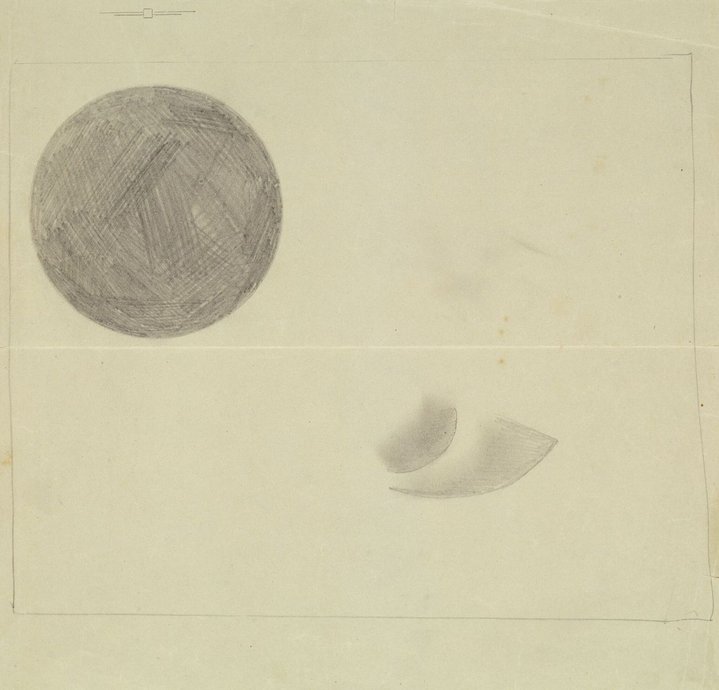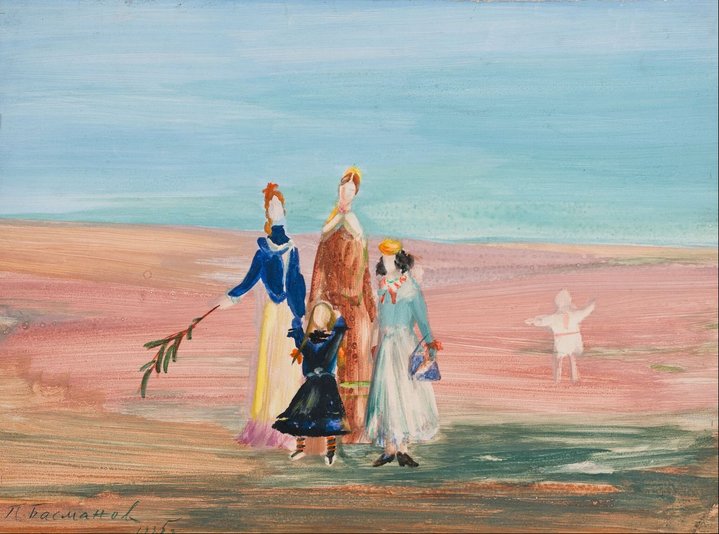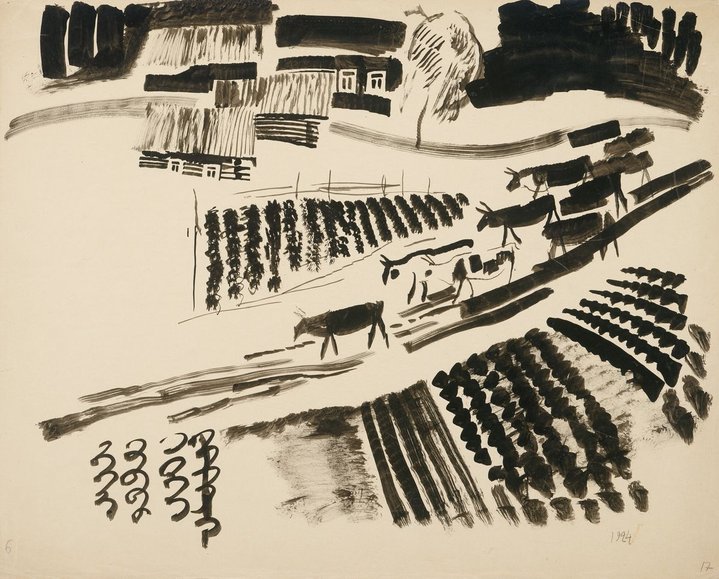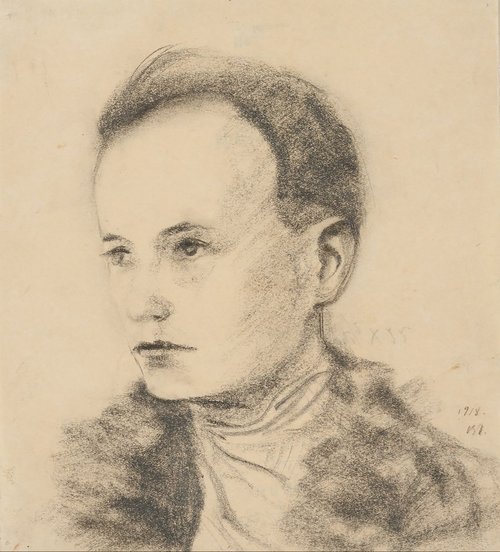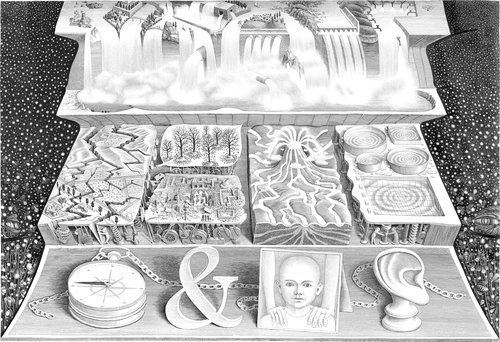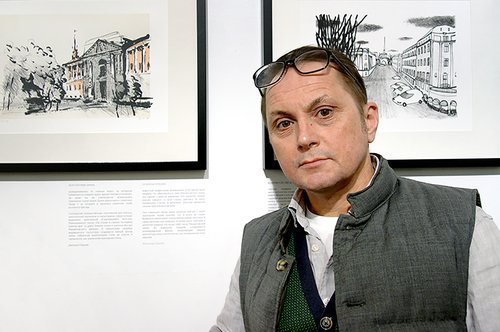A Drawing Room fit for New Drawings at the New Tretyakov

The State Tretyakov Gallery in Moscow has opened an exhibition boasting an impressive collection of works on paper acquired over the last two decades and spanning several generations from Kazimir Malevich to Oleg Kudryashov. Art critic Sergey Khachaturov shares his impressions of the show.
The collection of graphic art at the Tretyakov Gallery in Moscow is exceptionally rich even for a large-scale state museum. Its holdings present an intriguing parallel history of art and its curators in this niche field are known for coming up with exceptionally subtle and beautiful exhibitions, of which the present show is no exception. It is an aesthete’s delight.
Showing the complex paths of 20th century Modernism in Russia, it has been assembled entirely from new acquisitions made during the past twenty years. Collecting works on paper has long been a priority for the Tretyakov Gallery. Back in the 1920s it was Anatoly Bakushinsky who laid out the graphic department in the midst of the heyday of Avant-Garde and Modernist art. Then, after the Museum of Pictorial Culture was disbanded in 1929, its collection of Avant-Garde graphics was added to the holdings of the State Tretyakov Gallery. Alexandra Strukova, curator of the present show and head of the 20th century graphics department, explains that the next great addition to the collection was in 1970s, when part of the vast art collection of the legendary George Costakis, as well as a collection formed by the connoisseur, theorist and expert on graphic art Alexei Sidorov were acquired to the museum, adding yet more depth
Kirill Asse and Nadya Korbut came up with the design of the exhibition space giving it the delicate illusion of travelling inside a kind of gigantic, conceptual graphic room. There is a library lamp hanging above each label or information board. The enfilade of rooms is divided by thin picture frames like architectural arches or the metal bars of museum depositories. The designers of the show have exaggerated a rather elitist experience of finding an aesthetic dialogue in a complex web of seemingly spontaneously made sketches and lines.
At the entrance to the exhibition there is the semblance of a family tree with the names of all the artists, from Kazimir Malevich (1879–1935) to Oleg Kudryashov (1932–2022). It looks a bit like the map of Russia with its cities. And in addition to the well-known megalopolises, there are ‘towns’ inscribed with newly discovered names.
The suite of successive exhibition rooms is divided by these portals and frames into sections which cover two-decade intervals, starting in the 1910s. In the first section, next to an exquisite web of Suprematist sketches by Malevich from the collection of his student Anna Leporskaya (1900-1982), there is a sheet with strange annotations: Alexander (?) Boris (?) A (?) Zeitlin (? - 1920). It requires detective work to decipher the many unknowns it throws up. The artist Zeitlin studied with El Lissitzky (1890-1941) and was an engraver in the artist association UNOVIS, set up by Malevich in Vitebsk. The Tretyakov Gallery has on display his sketch for a Suprematist tram designed for 1st of May celebrations in 1920 on the Day of Solidarity of the Working People. According to Malevich's credo, non-objective segments attack the world of everyday things. A new universe is created, organized by the laws of Suprematist art.
Such finds are invaluable and they literally bring back pages that have been torn out of history. There are many such new discoveries in this exhibition. Among the displays of works on paper from the second half of the 20th century, of particular interest is the link made between so-called paper architecture - sheets by Yuri Avvakumov (b.1957), Alexander Brodsky (b.1955) and Ilya Utkin (b.1955) - and the tradition of the Vladimir Favorsky (1886–1961) and Andrei Goncharov (1903–1979). These latter two represent graphic art at its pinnacle, with its virtuoso technique and intricate exploration of the black and white architectonics of space. Among the many students of Andrei Goncharov at the Moscow Polygraphic Institute, Kirill Mamonov (b.1937) stands out as an heir to the art of outsider artists and expressionists like George Grosz (1893–1959) or Otto Dix (1891–1959). An entire series is devoted to scenes from life in a mental institution and its resident, the famous artist Vladimir Yakovlev (1934–1998). Mamonov draws Yakovlev drawing a pear. Behind the artist a cat looks out. The ball of strokes and lines that depict the figure of Yakovlev sprawled out over his desk forms a kind of cloud, moving and shining. The cloud is a metaphor for creativity itself. A man has fallen apart and melted down, but he has not stopped creating.
There is a natural end to the exhibition in a section dedicated to the artist Oleg Kudryashov, who passed away last year. In his works the artist summarizes the different styles and methods of 20th century Modernism, from Malevich's Suprematism and Tatlin's (1885–1953) counter-reliefs to Pop Art and Tachisme of the second half of the 20th century. It is a worthy epilogue to the exhibition in this new graphics room created by the Tretyakov Gallery.
The Age of Graphic Art. From Kazimir Malevich to Oleg Kudryashov. From the new acquisitions.
Moscow, Russia
18 May – 1 October 2023







